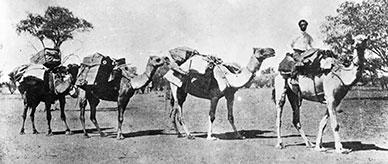


About this record
This document is a research report dated 4 February 1947 compiled by the Australian War Memorial into the most famous Anzac serviceman at Gallipoli in 1915 – Private John Simpson Kirkpatrick, aka Simpson – known to history as the 'man with the donkey'. The report gives an account of Simpson's courage and death by quoting from three authorities: a footnote in the Official History of Australia in the War of 1914–1918; a letter from 1915 by then Colonel later General Monash; and the Official History of the Australian Army Medical Services, 1914–1918. It forms part of Simpson's Australian Imperial Force (AIF) personnel dossier.
Educational value
- John Simpson Kirkpatrick (1812–1915), a stretcher-bearer with the 3rd Field Ambulance, Australian Army Medical Corps at Gallipoli, is an iconic figure in Australian history. He is famed for his courage in bringing in scores of wounded men on the back of his donkey from the front line in Monash Valley through almost constant fire in Shrapnel Gully to a dressing station at Anzac Cove. He carried out this work every day and most of every night from 25 April 1915 until his death on 19 May 1915.
- Simpson was the first to use donkeys to bring in the wounded at Gallipoli and was so effective that he was allowed to operate independently of the 3rd Field Ambulance. The donkeys had been landed to carry water to the front line but with the attack not succeeding as planned, their Greek handlers had been quickly evacuated. Simpson used one (not always the same one) of the abandoned donkeys to bring in those wounded not needing to be carried in by stretcher.
- Born John Simpson Kirkpatrick (1892–1915) at South Shields in the north of England, he enlisted as John Simpson, possibly because he had entered Australia as a deserter from a merchant ship. At Gallipoli he was known by various names or nicknames. As indicated here, Monash knew of him as Simpson but, perhaps because of his Tyneside accent, he was also known as 'Murphy', 'Scotty' and 'Simmie'. The Indian troops knew him as 'Bahadur' – bravest of the brave.
- How Simpson died is not clear from the report. Monash's letter says he was hit 'by a shrapnel shell'. The Official History of the Australian Army Medical Services 1914–1918 says he was 'shot through the heart'. The footnote of the Official History of Australia in the War of 1914–1918 says simply 'killed in action' but the full text (not included here) gives the definitive account – he was shot through the heart by machine gun fire while bringing in the wounded.
- The circumstances surrounding this 1947 report make it clear that Simpson's real identity was not widely known beyond Australia. In January 1947 the Walsh Printing Company in Auckland, New Zealand, wrote to Base Records of the Australian Defence Forces asking if particulars could be supplied of the man known as Simpson or Murphy. It was intending to publish a first-hand account of the man with the donkey written by New Zealand army chaplain Reverend CJ Bush King.
- The final section of the report says 'no cross of bronze marked his valour' and this remains the case today, although the ANZAC Commemorative Medallion bears his image. Simpson was twice recommended for the Victoria Cross and once for the Distinguished Conduct Medal, but these and later applications on his behalf were turned down by the British War Office. He was posthumously mentioned in despatches.
- The report contains two different accounts of the fate of the last donkey Simpson used; one that it was evacuated by Indian mule drivers and another that it was killed with Simpson. An accompanying letter to the Walsh Printing Company indicated that the officer-in-charge of Base Records thought the former was more likely to be true.
Acknowledgments
Learning resource text © Education Services Australia Limited and the National Archives of Australia 2010.
Related themes
Need help with your research?
Learn how to interpret primary sources, use our collection and more.


